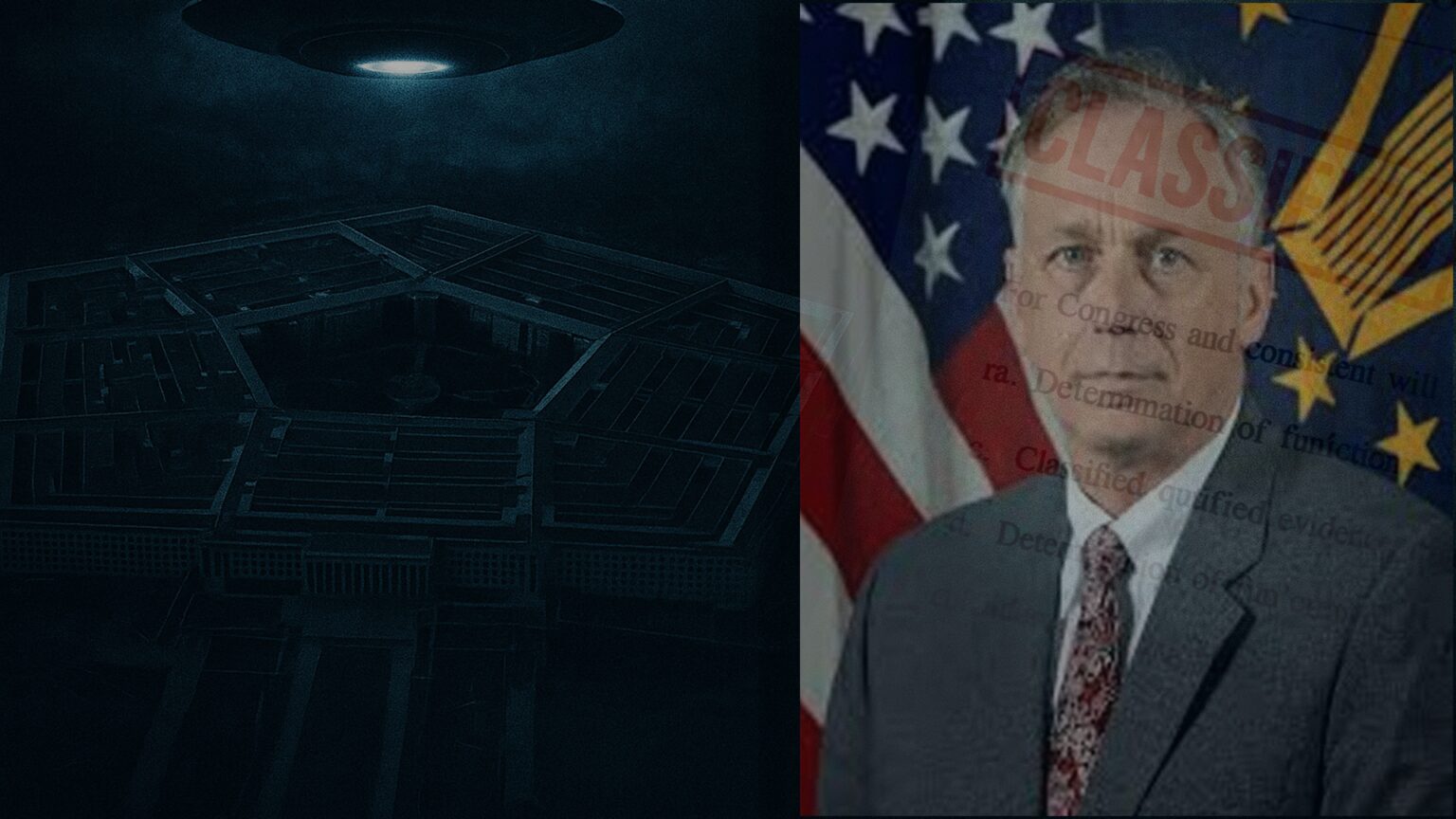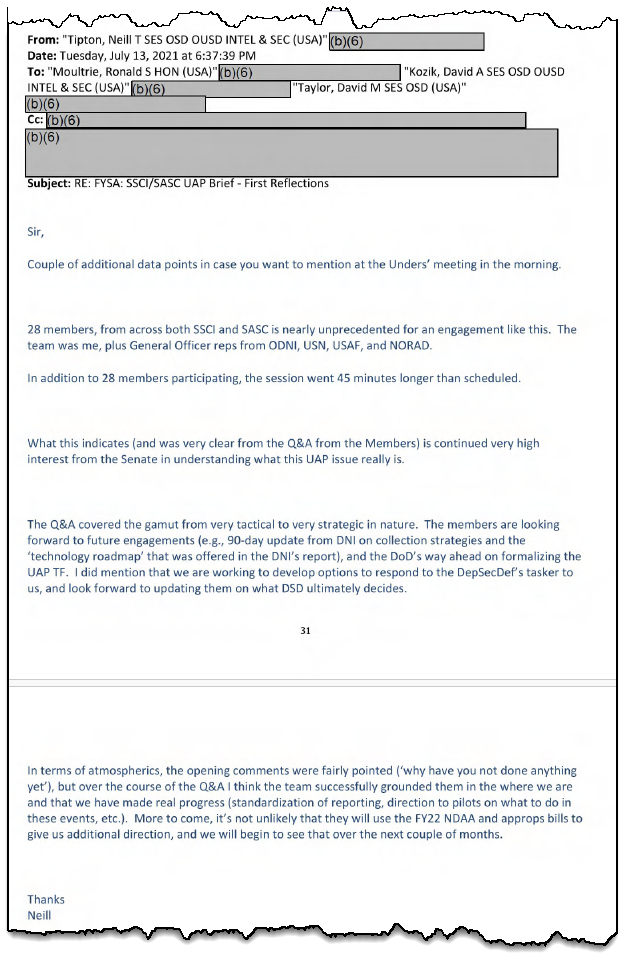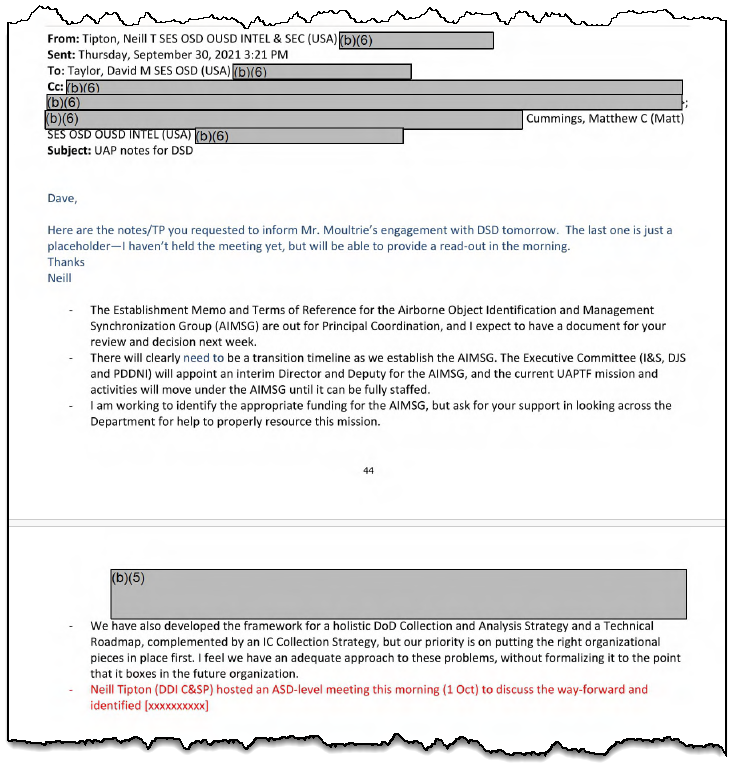
A newly released batch of documents, obtained through the Freedom of Information Act (FOIA), reveals that a senior Pentagon official—identified by Luis Elizondo as the person intended to take over the Advanced Aerospace Threat Identification Program (AATIP)—later played a central role in classified UAP briefings, high-level meetings, and the creation of the Pentagon’s UFO office known as AOIMSG. That office would ultimately evolve into what is now the All-domain Anomaly Resolution Office (AARO).
This connection adds a new layer to the long-running controversy surrounding AATIP. Although Elizondo has long maintained that the program investigated UFOs and that he led it until his 2017 resignation, the Pentagon has issued conflicting statements—at times denying both AATIP’s focus on unidentified anomalous phenomena (UAP) and Elizondo’s leadership. According to Elizondo, he had planned to transfer AATIP to Neill Tipton, a senior executive within the Office of the Under Secretary of Defense for Intelligence and Security (OUSD[I&S]). But that handoff, Elizondo says, never materialized.
Emails between Elizondo and Tipton, previously leaked to and published in part by Popular Mechanics in 2020, and later officially obtained and verified with additional emails revealed by The Black Vault via FOIA in 2024, appear to partially support this claim. In one message dated October 3, 2017, Elizondo wrote to Tipton, “I took the liberty of drafting a memo at the Unclassified level that helps you better assume the new responsibilities for AATIP.”
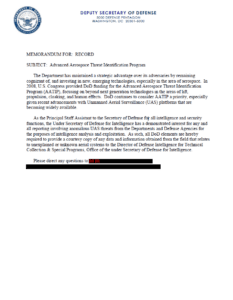
Yet, despite the plan outlined in these emails and memo released via the FOIA, Tipton would never join the ranks of AATIP, nor would he lead the program, according to Elizondo. “Neill got cold feet about taking my place at AATIP—something I wouldn’t have expected from him—and began to backpedal, telling people people that he knew nothing about AATIP, its focus, or my involvement,” Elizondo said in his book Imminent. “I was disappointed that my friend chose to do what he did, especially given the vast amount of emails and witnesses who knew Neill was slated to take over AATIP when I left.”
After Elizondo’s retirement, the Department of Defense frequently denied that Elizondo ever had a role within AATIP, and repeatedly stated that the program did not have a focus on UFOs.
But, in what appeared to be an about face with at least part of their stance, Pentagon spokesperson Christopher Sherwood told the NY Post in 2019, “AATIP did pursue research and investigation into unidentified aerial phenomena.” Many rejoiced at the confirmation about what Elizondo had already said for some time, but the excitement about what many hoped to be a new era of transparency about AATIP was short-lived.
Sherwood’s statement was corrected seven months later by another Pentagon spokesperson Susan Gough. Gough had taken over being the sole public affairs official speaking on the UAP topic. “Neither AATIP nor AAWSAP were UAP related,” Gough wrote in a 2019 e-mail to The Black Vault. “The purpose of AATIP was to investigate foreign advanced aerospace weapons system applications with future technology projections over the next 40 years, and to create a center of expertise on advanced aerospace technologies.”
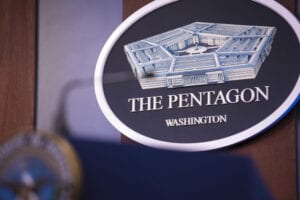 When asked about the discrepancy between her statement and Sherwood’s, Gough stated to The Black Vault, “At the time, Mr. Sherwood was repeating the information that had been provided by a previous spokesperson some two years earlier.” She continued, “That previous spokesperson is no longer with my organization, and I cannot comment on why that person’s explanation of AATIP included that it had looked at anomalous events. According to all the official information I have now, when implemented, AATIP did not pursue research and investigation into unidentified aerial phenomena; that was not part of the technical studies nor the reports produced by the program.”
When asked about the discrepancy between her statement and Sherwood’s, Gough stated to The Black Vault, “At the time, Mr. Sherwood was repeating the information that had been provided by a previous spokesperson some two years earlier.” She continued, “That previous spokesperson is no longer with my organization, and I cannot comment on why that person’s explanation of AATIP included that it had looked at anomalous events. According to all the official information I have now, when implemented, AATIP did not pursue research and investigation into unidentified aerial phenomena; that was not part of the technical studies nor the reports produced by the program.”
The previous spokesperson no longer with the DoD that Gough referred to, was Lt. Col. Audricia Harris, who stated to researcher Roger Glassel in 2018 that AATIP had researched “…anomalous events (such as sightings of aerodynamic vehicles engaged in extreme maneuvers, with unique phenomenology, reported by U.S. Navy pilots or other credible sources).” According to Gough, Sherwood simply translated this previous statement as AATIP pursued UAPs during their research, and issued his statement to the NY Post erroneously.
Finally in 2021, all of that was seemingly changed yet again when the Pentagon released another statement claiming that, “In developing the reports and exploring how to create a ‘center of expertise,’ the [AATIP] contract allowed for research drawn from a wide variety of sources, including reports of UAPs. However, the examination of UAP observations was not the purpose of AATIP.”
Despite this constantly shifting position by the DoD, this new FOIA release on April 1, 2025, in response to a 2022 request filed by The Black Vault, contains multiple email threads and internal communications placing Tipton at the center of UAP planning and strategizing in 2021 and 2022.
In a July 13, 2021, email to senior DoD officials, Tipton described a high-level UAP briefing to the Senate Select Committee on Intelligence (SSCI) and Senate Armed Services Committee (SASC), noting that 28 senators attended—an unusually high turnout that was “nearly unprecedented for an engagement like this”—and that “continued very high interest from the Senate” was evident. He confirmed his direct participation in the briefing, alongside representatives from ODNI, the Navy, the Air Force, and NORAD.
Just months later, Tipton was involved in the establishment of the Airborne Object Identification and Management Synchronization Group (AOIMSG), the office stood up by the Pentagon following the dissolution of the UAP Task Force. In a November 23, 2021, email, Tipton confirmed that Deputy Secretary of Defense Kathleen Hicks had signed the AOIMSG stand-up memo and stated that his team was “already working implementation direction.”
These details paint a complex picture. Although Tipton never assumed leadership of AATIP, as Elizondo intended, his later prominence in classified UAP briefings and the establishment of the Pentagon’s UFO infrastructure raises new questions—especially given the Pentagon’s earlier denials that AATIP had anything to do with UFOs. In other words, why Tipton out of everyone else within the DoD’s massive infrastructure of people within it?
For critics of Elizondo’s narrative, the Pentagon’s 2018 and 2019 statements denying his leadership role or AATIP’s UAP focus seemed definitive. But the trajectory of Tipton—named by Elizondo as the intended recipient of AATIP responsibilities—suggests the subject matter was, in fact, deemed serious enough to warrant his engagement through classified briefings, organizational leadership, and strategic planning when it came to UAPs.
The Department’s own documents now confirm that Tipton himself “hosted an ASD-level meeting” on UAP issues; helped develop a “DoD Collection and Analysis Strategy;” and participated in drafting the framework for a “Technical Roadmap,” according to September 2021 internal correspondence released in this FOIA case.
While Elizondo has faced scrutiny over the exact nature of his role, even by The Black Vault, these documents show that his intended successor was not only involved in UAP discussions—but instrumental in advancing them.
The Pentagon has yet to publicly reconcile these apparent contradictions.
This FOIA release represents just one more piece of a broader puzzle still being put together. More documents and records may further clarify how—and by whom—the Pentagon’s UFO investigations were managed in the years leading to the formation of AARO.
And as this never-before-told chapter continues to unfold, The Black Vault will publish all additional records that may surface in the future. Numerous FOIA requests remain outstanding.
###
Document Archive
 Released Records in FOIA Case 22-F-0863 [23 Pages, 2.7MB]
Released Records in FOIA Case 22-F-0863 [23 Pages, 2.7MB]
 Loading...
Loading...Follow The Black Vault on Social Media:

